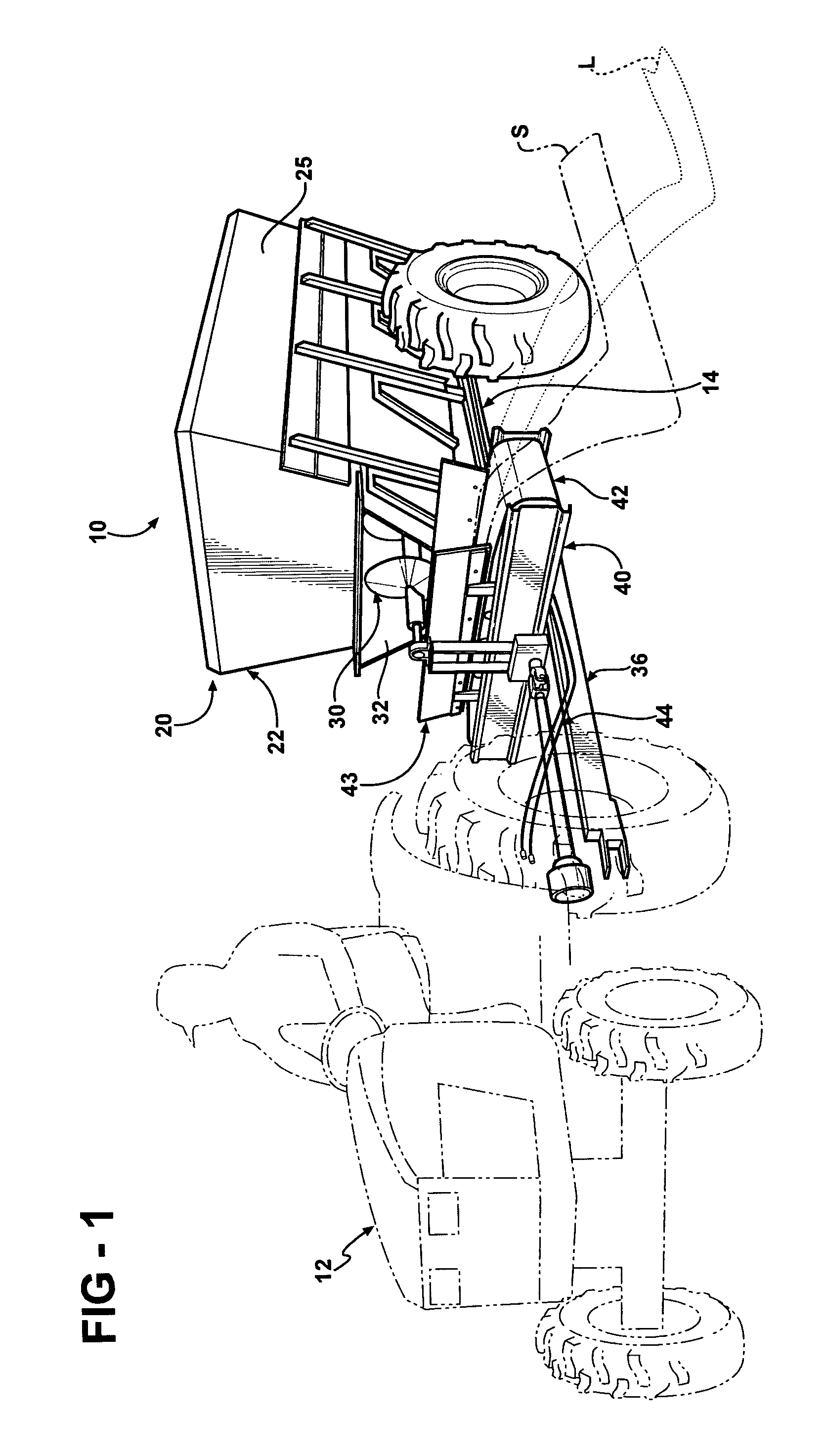Self unloading pull-type trailer
a self-unloading, pull-type technology, applied in the direction of positive displacement liquid engine, applications, ways, etc., can solve the problem of limiting the options of the operator of any of these systems, and achieve the effect of allowing the operator more flexibility in selecting
- Summary
- Abstract
- Description
- Claims
- Application Information
AI Technical Summary
Benefits of technology
Problems solved by technology
Method used
Image
Examples
Embodiment Construction
[0018]The following descriptions are of an exemplary embodiment only, and are not intended to limit the scope, application of configuration of the invention in any way. Rather, the following descriptions provide a convenient illustration for implementing exemplary embodiments of the invention. Various changes to the described embodiment may be made in the function and arrangement of the elements described without departing from the scope of the invention as set forth in the claims.
[0019]Referring to FIGS. 1 and 2, there is shown an improved self-unloading spreader 10 of the type usually pulled by a tractor 12 (though the spreader could be self-powered as well). The self-unloading spreader 10 has a frame 14 upon which is mounted a container 20 that can contain material that needs to be spread such as dry sand, small stone, topsoil, mulch and many other types of material. The container 20 has a front end wall 22, a read end wall 23, two side walls 24 and 25 and a bottom 26. Together t...
PUM
 Login to View More
Login to View More Abstract
Description
Claims
Application Information
 Login to View More
Login to View More - R&D
- Intellectual Property
- Life Sciences
- Materials
- Tech Scout
- Unparalleled Data Quality
- Higher Quality Content
- 60% Fewer Hallucinations
Browse by: Latest US Patents, China's latest patents, Technical Efficacy Thesaurus, Application Domain, Technology Topic, Popular Technical Reports.
© 2025 PatSnap. All rights reserved.Legal|Privacy policy|Modern Slavery Act Transparency Statement|Sitemap|About US| Contact US: help@patsnap.com



